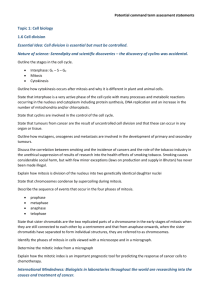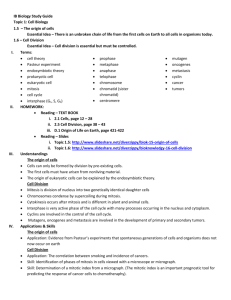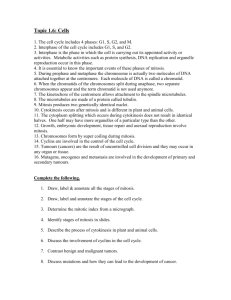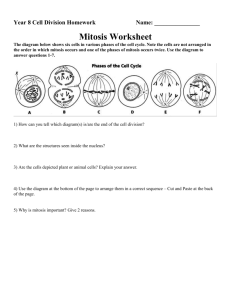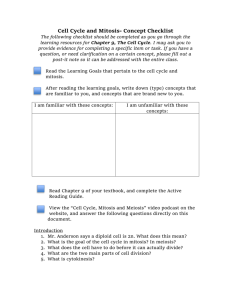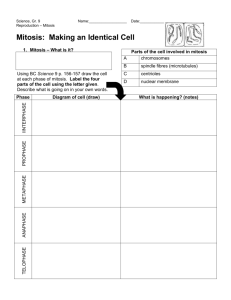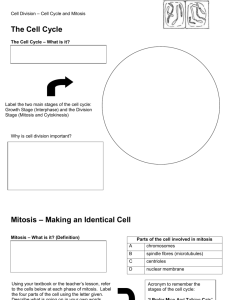Topic 1.6 Cell Division Instructions: READ FOR UNDERSTANDING
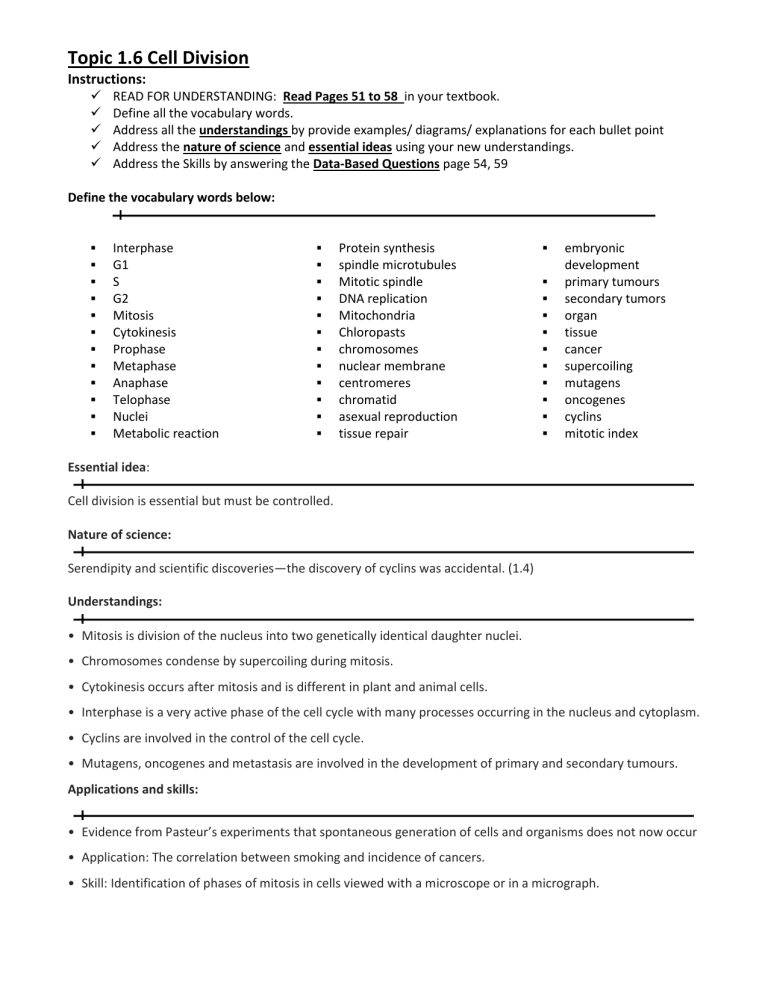
Topic 1.6 Cell Division
Instructions:
READ FOR UNDERSTANDING: Read Pages 51 to 58 in your textbook.
Define all the vocabulary words.
Address all the understandings by provide examples/ diagrams/ explanations for each bullet point
Address the nature of science and essential ideas using your new understandings.
Address the Skills by answering the Data-Based Questions page 54, 59
Define the vocabulary words below:
Interphase
G1
S
G2
Mitosis
Cytokinesis
Prophase
Metaphase
Anaphase
Telophase
Nuclei
Metabolic reaction
Essential idea:
Protein synthesis spindle microtubules
Mitotic spindle
DNA replication
Mitochondria
Chloropasts chromosomes nuclear membrane centromeres chromatid asexual reproduction tissue repair
embryonic development primary tumours secondary tumors organ tissue cancer supercoiling mutagens oncogenes cyclins mitotic index
Cell division is essential but must be controlled.
Nature of science:
Serendipity and scientific discoveries—the discovery of cyclins was accidental. (1.4)
Understandings:
• Mitosis is division of the nucleus into two genetically identical daughter nuclei.
• Chromosomes condense by supercoiling during mitosis.
• Cytokinesis occurs after mitosis and is different in plant and animal cells.
• Interphase is a very active phase of the cell cycle with many processes occurring in the nucleus and cytoplasm.
• Cyclins are involved in the control of the cell cycle.
• Mutagens, oncogenes and metastasis are involved in the development of primary and secondary tumours.
Applications and skills:
• Evidence from Pasteur’s experiments that spontaneous generation of cells and organisms does not now occur
• Application: The correlation between smoking and incidence of cancers.
• Skill: Identification of phases of mitosis in cells viewed with a microscope or in a micrograph.
Skill: Determination of a mitotic index from a micrograph.

